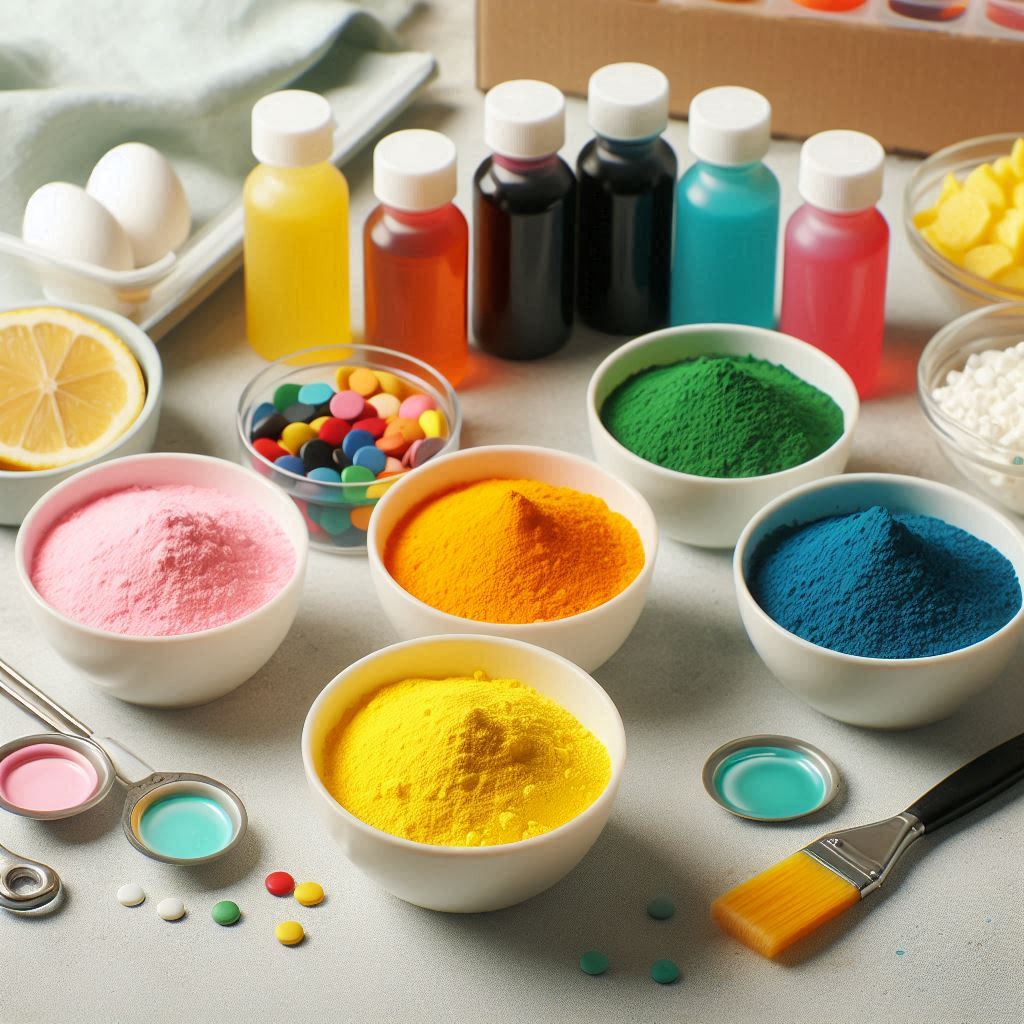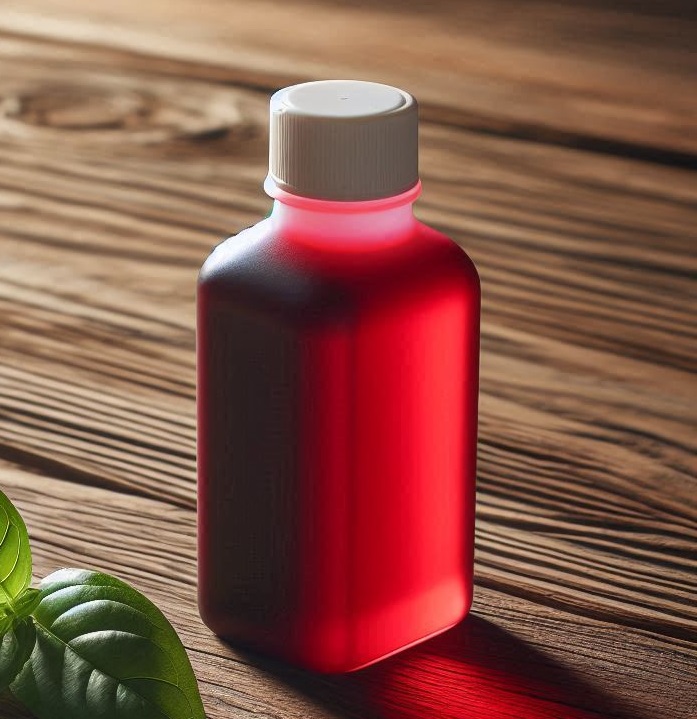Concerns Around Common Food Dyes

The United States Food and Drug Administration banned the use of Red 3 or FD&C #3, a food dye often used in candies and other foods, medications and cosmetics. The ban is scheduled to take effect in 2027. It was implemented due to concerns that Red 3 could cause cancer, with animal studies showing carcinogenic effects. However, it’s worth noting that increased cancer risk with high-level exposure to Red #3 has been known since the late 1970s (Lin 1986).
While it’s good to remove dyes out of the food supply that may cause cancer, there are other artificial dyes that raise health concerns that are still commonly used in food. Red 40 (Allura Red), Yellow 5 (Tartrazine) and Yellow 6 (Sunset Yellow) all have concerns for their use and are still approved for food use in the United States.
Red 40 (Allura Red)
FD&C Red 40 is a synthetic red dye derived from petroleum that was introduced in the 1970s. As a food coloring, Red 40 is commonly encountered in numerous products and processed foods and beverages that are colored red. Safety studies have shown that Red 40 doesn’t appear to shorten lifespan or cause cancer in rats (Borzelleca 1989). However, newer studies show significant changes in numerous blood and liver parameters in rats exposed to Red 40 (Kumar 2022).
Other animal studies are also starting to raise significant concerns. A study in mice fed Red 40 combined with a high fat diet, similar to the standard American diet, found detrimental gastrointestinal effects. In the study, mice were found to have DNA damage, detrimental changes to their gut flora and low grade inflammation along the colon (Zhang 2023).
A similar study also showed that in rats, Red 40 caused increased colonic inflammation and increased risks for developing colitis or inflammatory bowel disease (Kwon 2022). The detrimental effects were related to changes in the microbiome or gastrointestinal flora and the detrimental changes could be transferred to healthy germ-free mice through a stool transplant.
Based on the more recent research, the concerns for the effects of Red 40 are increasing. Unfortunately, funding studies to evaluate safety of approved food dyes is minimal and it may still be years before Red 40 is identified as a significant toxicant that should be removed from the food supply.
Yellow 5 (Tartrazine)
Similar to Red 40, Yellow 5 is a derivative of petroleum, although it has a much longer history of use, being discovered in the late 1800s. It has been widely recognized that allergies to Yellow 5 can occur, causing symptoms including skin itching, runny nose and asthma. Individuals allergic to aspirin more commonly react to Yellow 5 (Miller 1982). As a coloring agent, Yellow 5 is frequently encountered in beverages, candies, chips, soups and other colored processed food products. It’s also used in cosmetics and as coloring in medications.
In animal studies, Yellow 5 is known to induce both liver and kidney abnormalities and damage with large doses (Ali 2016). Liver enzymes increase, indicating inflammation, while antioxidant status is reduced. On microscopic evaluation, the liver and kidneys show degeneration when rats were fed excessive levels of the dye. A similar high-dose rat study found Yellow 5 has effects on the brain, with cellular and blood vessel damage along with decreased antioxidant status in brain tissues (Hosieny 2021).
A study in young rats that included dosing at what are considered safe levels raised additional concerns. Yellow 5 had appreciable effects on disrupting thyroid and female sex hormone levels along with mineral concentration in organs in what is typically considered a safe dosing range (Shakoor 2022). Due to the “severe” effects, the authors recommend decreasing the safe level of exposure for humans in food and beverages.
Yellow 6 (Sunset Yellow)
Another common yellow dye is Yellow 6 also known as Sunset Yellow. Like other artificial dyes it is also derived from petroleum. A study in developing mice using doses ten times higher than what is considered safe, showed significant intestinal damage (Sensoy 2024). Intestinal weights were increased, while the stomach and small intestine displayed ruptures, fractures and bleeding. The stomach also showed necrosis or significant death and degeneration of normal tissue.
A similar study investigating the effects on the liver and pancreas found that in developing mice, the pancreas developed into a state of chronic inflammation (Sensoy 2024). The author recommended limiting exposure of Yellow 6 at early stages of development.
In rats, with increasing doses of Yellow 6, damage was seen to the male reproductive tract (Dara 2024). Damage appeared to be mostly caused by increased free radical activity. A separate study also showed damage to the male reproductive system, causing tissues to be more “leaky” (Karimi 2023).
Of concern, a recent study compared a standard Yellow 6 to commercially available dye (Qasim 2024). Commercially available dye had higher toxicity as compared to a pure standard Yellow 6, indicating the likely inclusion of other toxic components in the commercially available product. Considering most studies aren’t done with commercially available dyes, the toxicity studies may be overestimating the safety of Yellow 6.
Human Studies and Food Dyes

While not many human trials have been conducted on the effects of food dyes, the studies that have been published raise obvious concerns. Studies have found increased hyperactive behaviors in children who were consuming a mixture of six different food dyes as compared to placebo (Bateman 2004, McCann 2007).
A study from 2022 found that food dyes cause detrimental effects on brainwave activity in children with attention-deficit/hyperactivity disorder (ADHD), but not for children without the condition (Kirkland 2022). A meta-analysis found that removing food dyes from the diet provides significant beneficial effects on ADHD symptoms in children, but additional better quality studies are needed to fully understand the relationship (Sonuga-Barke 2013).
Conclusion
With the recent removal of Red 3 from the list of food ingredients recognized as safe, it’s worth questioning the safety of other commonly used food dyes. Unfortunately, the data appears to suggest that concerns aren’t just limited to Red 3. Other commonly used food dyes, including Red 40, Yellow 5 and Yellow 6, among others, appear to have negative effects on health. The most well documented effects in humans appear to be worsening of ADHD-type behaviors. Although organ damage and hormonal effects shouldn’t be ruled out with higher levels of exposure.
When possible, choose food products that don’t contain artificial dyes or use natural alternatives to avoid the detrimental effects.



